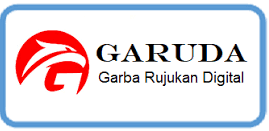PENGARUH DIMENSI TRUST, KEAMANAN DAN PRIVASI TERHADAP KEPERCAYAAN PENGGUNA UNTUK LAYANAN CLOUD COMPUTING BERBASIS SOFTWARE AS SERVICE
DOI:
https://doi.org/10.34151/technoscientia.v8i1.189Keywords:
Cloud computing, trust, integrity, benevolence, ability, security, privacyAbstract
Cloud computing is one of latest innovation in the development of Internet-based computing technology. Cloud computing uses virtualization concepts that can be accessed via Internet, so can reduce the cost of Information Technology (IT) and facilitate IT service management. Service provided is multi-tenant so computing resources can be used together and adjusted to user needs (elasticity). Software as a Service (SaaS) is cloud computing services frequenly used. Security is a major problem in the development of cloud computing technology. Guarantee of security and privacy user data, it will raise trust of users to vendor.The study aims to analyze the factors can be effected trust of cloud computing user based on Software as a Service (SaaS). Samples that used are users who have been using cloud computing services based on Software as a Service (SaaS) more than three months. Instrument used is questionnaire and measured by scale Likert. There were 50 respondent in this study. The data analysis method used is Partial Least Square. Results of the study found that factors significantly affect user trust are ability, security and privacy of vendor.
References
B. Hayes, “Cloud Computing”. 2008. Communications of the ACM, 51 (7), 9-11.
“Komputasi Awan.” [Online]. Available: http://id.wikipedia.org. Accessed: 26-October-2015].
NIST-Peter Mell and Tim Grance, 2009. Cloud computing Definition version 15.
H. B. Waluyo, “Trust dalam Cloud Computing,” 2011, STEI ITB.
S. Pearson and A. Benameur, “Privacy, Security and Trust Issues Arising from Cloud Computing,” 2010, Bristol, UK.
R. C. Mayer, J. H. Davis, and F. D. Schoorman, 1995. “An Integratif Model of Organizational Trust”, Academy of Management Review, 30 (3): 709-734.
B. A. Aubert and B. L. Kelsey, 2000. “The Ilusion of Trust and Performance”, Scientific Series of Cirano, 3: 1-13,
A. G. Pramika, , 2012 “Pengaruh Privasi, Keamanan dan Kepercayaan terhadap Niat Menggunakan Online Job Market”, Universitas Gadjah Mada.
T. Pikkarainen, K. Pikkarainen, Karjaluoto, Heikki and S. Pahnila, 2002 “Consumer Acceptance Model of Online Banking: An Extension of the Technology Acceptance Model”, Internet Research, vol 14, pp. 224-235.
Jogiyanto, 2011, Konsep dan Aplikasi Structural Equation Modeling (SEM). Yogyakarta: Unit Penerbit dan Percetakan STIM YKPN Yogyakarta.
Jogiyanto, 2008, Metodologi Penelitian Sistem Informasi. Yogyakarta: Andi Offset.
W. W. Chin, 1995, “Partial least square is to LISREAL as principal components analysis is to common factor analysis”, Technology Studies, vol 2, pp. 315-319.
J. F. J. Hair, W. C. Lack, B.. J. Babin,R. E. Anderson, and R. L. Tatham,Multivariate Data Analiysis. 2008, New York: Pearson Prentice Hall.
P. Papadopoulou, and D. Martakos, 2008, “Designing online stores for a trust-building interaction”, Communications of the IBIMA, vol 4, pp. 80-87.







